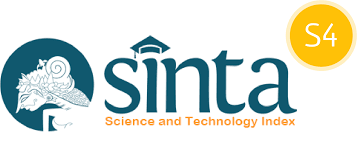Penerapan Pembelajaran Berbasis Mikrokontroler untuk Keterampilan Kompetensi Keahlian Jurusan Teknik Audio Video SMK Negeri 3 Selong .
DOI:
https://doi.org/10.29408/jit.v3i1.1851Keywords:
Mikroprosesor, Mikrokontroller, Metode Participatory Learning and Action (PLA).Abstract
One of the materials provided at SMK is Microprocessor and Microcontroller System material. The material is very important to study because currently, the system based on microprocessor systems and microcontrollers is becoming a technology that is in demand and is developing in the community. Starting from the application of analog electronic circuits, then digital and now almost all equipment uses microprocessor systems, for example, devices close to us, such as mobile phones, televisions, radio-cassettes, washing machines to space instruments. Based on the description above, a method is needed learning that is able to provide a deeper understanding of the microcontroller-based system as well and can increase student interest in learning. The method used is the Participatory Learning and Action (PLA) method. Community service programs through the application of science and technology will be directed to provide an introduction to microprocessor and microcontroller technology using the Arduino electronic system development module theoretically and practically for application in the field of audio-video engineering. The skills competency training program activities for students of SMK Negeri 3 SELONG majoring in Computer and Network Engineering can be carried out properly and run smoothly in accordance with the planned activities that have been prepared from the start, although not all students participating in the training can master the training material provided. This activity received a good reception, as evidenced by the consistency and seriousness of the trainees attending the training activities from beginning to end, and did not leave the place before the training ended. The success of the target achieved by the number of training participants who reached more than 10 participants. Achievement of research objectives is to the students of SMK Negeri 3 SELONG to gain additional insight into the microcontroller. The ability of students of SMK Negeri 3 SELONG in increasing knowledge in the field of microcontrollers is improved compared to before carrying out training activities, this can be seen from the results of the practice that has been carried out by students during training
DOI : 10.29408/jit.v3i1.1851
References
Ahwadz, F.M. (2010) Trainer mikrokontroler ATMEGA32 sebagai media pembelajaran pada kelas xi program keahlian audio video di smk negeri 3 Yogyakarta. Yogyakarta : Fakultas Teknik UNY.
Arif. W. (2009) Modul Pembelajaran PLC, Trainer PLC Omron CPM2A 40 I/O Dan Prototype Lampu Lalu Lintas 4 Jalur Sebagai Media Pembelajaran Kompetensi Keahlian Elektronika Industri SMK Negeri 5 Surakarta. Yogyakarta : Fakultas Teknik UNY.
Arduino Tutorial. www.arduino.co.cc. Diakses pada tanggal 20 Oktober 2014.
Pretty, JN., Irene, G., Ian, S., Jhon, T. (1995). A Trainer’s Guide for Participatory Learning and Action. Didapatkan dari: http://pubs.iied.org/pdfs/6021IIED.pdf. Diakses 17 Januari 2017.
Juwanto, Rizki Edy .2014. Media Pembelajaran Mikrokontroler Avr Untuk Siswa Kompetensi Keahlian Teknik Audio Video SMK Neger 2 Yogyakarta. Yogyakarta. Fakultas Teknik Universitas Negeri Yogyakarta.
Downloads
Published
How to Cite
Issue
Section
License
Semua tulisan pada jurnal ini menjadi tanggung jawab penuh penulis. Jurnal Infotek memberikan akses terbuka terhadap siapapun agar informasi dan temuan pada artikel tersebut bermanfaat bagi semua orang. Jurnal Infotek ini dapat diakses dan diunduh secara gratis, tanpa dipungut biaya sesuai dengan lisense creative commons yang digunakan.
Jurnal Infotek is licensed under a Creative Commons Attribution 4.0 International License.
Statistik Pengunjung




